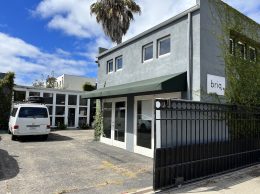Tri-Counties start to reopen closed parts of the region’s economy
IN THIS ARTICLE
- Health Care & Life Science Topic
- pacbiztimes Author
By pacbiztimes Friday, May 8th, 2020
California is reopening some previously-closed establishments, but what that actually looks like will depend on the county — and in some places, the city — where people live.
San Luis Obispo, Santa Barbara and Ventura counties are all taking different approaches as they figure out how to best protect their populations while allowing some parts of the economy to reopen.
Under guidelines the state released on May 4, some counties can move through Stage 2 faster than the state, depending on if they’re meeting the state’s readiness criteria.
That includes proving they have low levels of COVID-19 in their communities, that they’re meeting testing and contact tracing criteria, that their health care system is prepared in case of a large spike of cases, and that they have plans in place to protect vulnerable populations.
The state is preparing additional guidance on what businesses can reopen, but that guidance had not been released at press time.
All three counties meet those criteria, and some have developed or are developing their own criteria for what they want to see from businesses that are reopening. In SLO County, which has seen the least number of confirmed cases and the fewest deaths, the county considers itself to be in “pre-Phase One,” in a different system than the one the state is using.
In order to get to Phase One, both the state and the county have to lift the stay-at-home order — neither of which have happened. Additionally, the guidelines for loosening restrictions have to be met for 14 days, but even when the restrictions are loosened, the county says that lift should be considered temporary. The restrictions can be tightened again, depending on public health needs.
Once SLO enters Phase One, there will still be restrictions in place minimizing non-essential travel and encouraging people to work from home as much as possible. Colleges and campgrounds will still be closed, and people won’t be able to visit their loved ones in the hospital or in senior living facilities. Still, most businesses will be able to partially reopen, as well as modified re-openings for schools, gyms, parks and playgrounds.
Santa Barbara County is also developing its own guidelines, but those weren’t released to the public at press time. Still, Santa Barbara County Public Health Director Dr. Van Do-Reynoso has said the county is in a good place in regards to its coronavirus response and preparedness plans. Testing sites have opened in Santa Maria, with additional sites coming online later in Santa Barbara and Lompoc.
Ventura County leaders don’t have a different set of guidelines for the county as a whole, but are instead using the state’s guidelines to determine where the county is in the process of reopening. In late April, Gov. Gavin Newsom gave six goals counties could work to as they prepared to reopen, and Ventura County has been consistently meeting those goals.
Ventura Mayor Matt LaVere has been posting coronavirus updates on his public Facebook page, and he discussed what the city is doing in a May 5 post. The city of Ventura had discussed several ideas, including removing permitting obstacles and shutting down streets on certain days, to give businesses more room for outdoor dining and retail.
“Now, more than ever, Ventura needs to be bold and innovative in helping our small business community recover from this devastating pandemic,” LaVere wrote.
Reopening businesses isn’t as simple as just giving them the greenlight to start up again. In a May 4 webinar, several business leaders in Morro Bay discussed the issues they face in regards to making sure their stores will be safe for people once they’re allowed to reopen.
Some of those issues involve sourcing additional cleaning supplies, masks and signs or markers which will help customers see how far they need to be away from staff members or other customers.
Erica Crawford, president and CEO of Morro Bay Chamber of Commerce, encouraged members to work on getting those supplies and figuring out their plans now, before those items and plans are needed.
“You’re probably not going to get much advance warning (about reopening),” Crawford said. “You have to be ready.”
The members also discussed issues of having employees to run the businesses when they reopen. With the temporary boost to unemployment, some employees are making more now than they would by working part time at minimum wage.
“It’s harder to get employees here anyway, and they have every reason under the sun to stay away,” said Cherise Hansson, owner of Under the Sea Gallery.
And even if employees want to return, it might not be smart. Several business owners and managers discussed how they were adapting to employees who fall into more vulnerable groups or who are under 18 and might not be allowed to come back to work by their parents.
The concerns are slightly eased by the fact that when businesses reopen, they likely won’t need as many employees as they did before the crisis, as most people will still be under a stay-at-home order for at least the next few weeks, if not months. That’s not much of a relief, though, as it means business will be slow to pick back up, extending economic worries.
Because of this, Hansson isn’t sure she’ll be able to give people as many hours as they would have otherwise gotten.
“It’s going to be a battle,” Hansson said.
Even with the chaos and uncertainty, though, all of the business leaders in the meeting spoke about how they wanted to reopen. They spoke about missing their staff and their customers.
“Everyone wants to be open,” Crawford said. “The bottom line is that we’re businesspeople and we want to be in business.”
• Contact Amber Hair at [email protected].
Related Articles
 Friday, October 14th, 2022
Friday, October 14th, 2022











